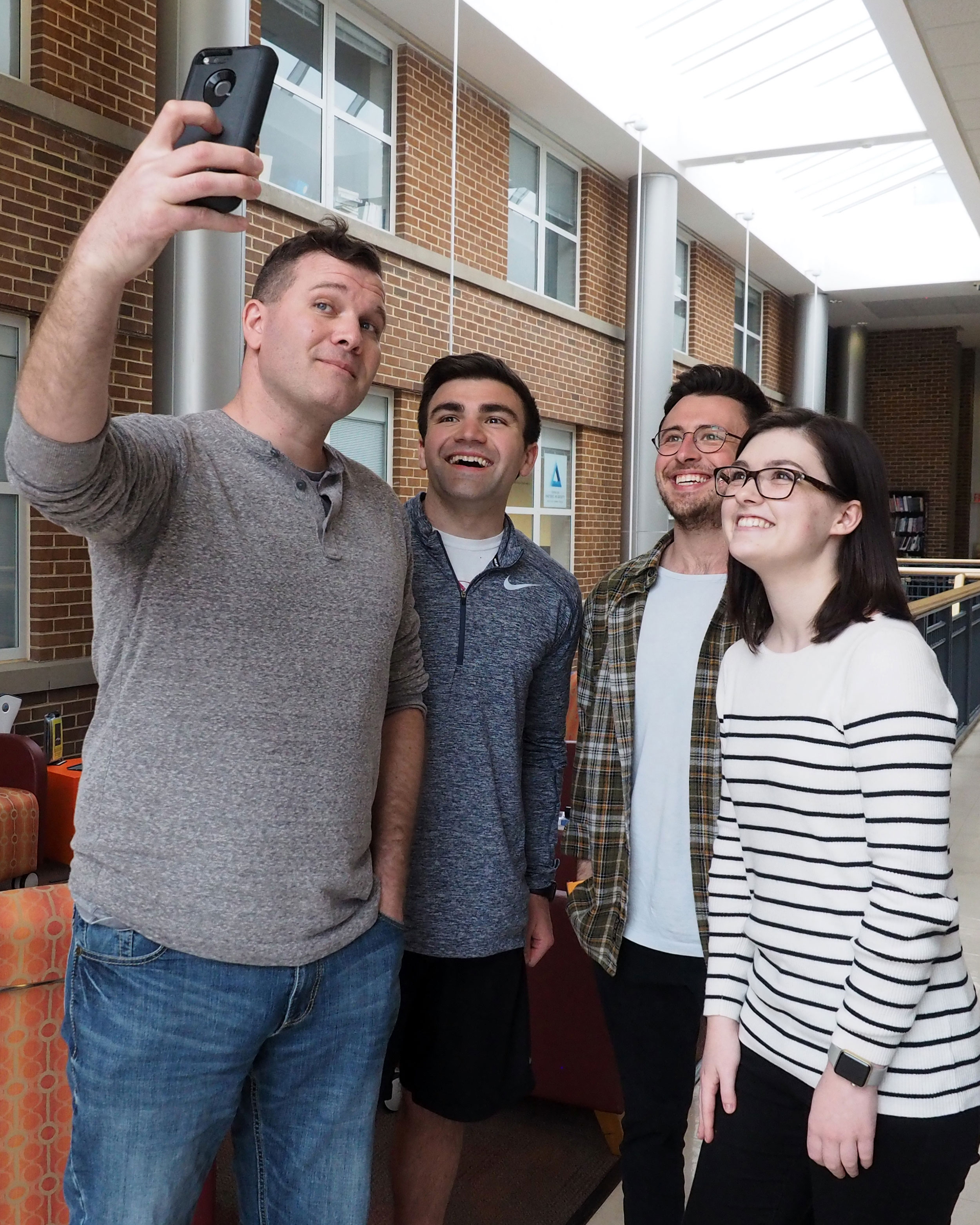Advancements in technology and the popularity of social media have propelled self-taken portraits, also known as selfies, to status as a cultural phenomenon. The word itself has become so popular it was named Oxford Dictionaries 2013 Word of the Year, and National Selfie Day is celebrated annually on June 21.
The selfie trend has spawned a related economy with online guides and an array of tools available for purchase. There’s even a cellphone-attachable tennis ball to command a dog’s attention for the perfect pet-owner selfie.

So how did we get here, and better yet, why?

According to James Ivory, an associate professor in Virginia Tech’s Department of Communication, the selfie trend may be recent, but its roots are not.
“I think the selfie phenomenon is a good example of how society and technology alternately influence each other. On the one hand, the simplest explanation for the proliferation of selfies is that this is the first time in history that so much of the population has access to both high-quality camera technology and online publishing. The technology enables us to document life—including ourselves—more readily than ever before,” said Ivory.
But just because we have mobile phone cameras and instant internet access doesn’t mean we have to take pictures of ourselves. So why do we use this technology for ‘selfies’ so often? “Some believe the selfie culture is evidence of youth narcissism, social media addiction, or any number of other pathologies,” Ivory said.
Yet, historical anecdotes show that previous generations participated in primitive selfie practices specific to their eras.
“For example, it has long been a custom for the wealthy to sit for elaborate self-portraits. And, in the early days of photography, when the process was cumbersome and expensive, even the ascetically untamed West saw photographers successfully selling portraits in places where only select luxuries were in demand. Victorian-era families were known to sit for photos with recently deceased loved ones. These postmortem images reflect the desire for the bereaved to immortalize their own likenesses along with those of lost loved ones.
“Thus, I have a feeling that if Renaissance bluebloods, 19th-century cowboys and outlaws, and Victorian mothers and fathers had been able to snap a few selfies, they certainly would have. But the most conclusive evidence may be in the technology—of all the features that might be squeezed into a smartphone, the nearly universal availability of a camera is evidence that humankind wants one—and maybe always has.
Say cheese Snap a Virginia Tech selfie of you, your family, or your friends and email it to vtmag@vt.edu. You may find your smile featured online or in a future edition of the printed magazine.
